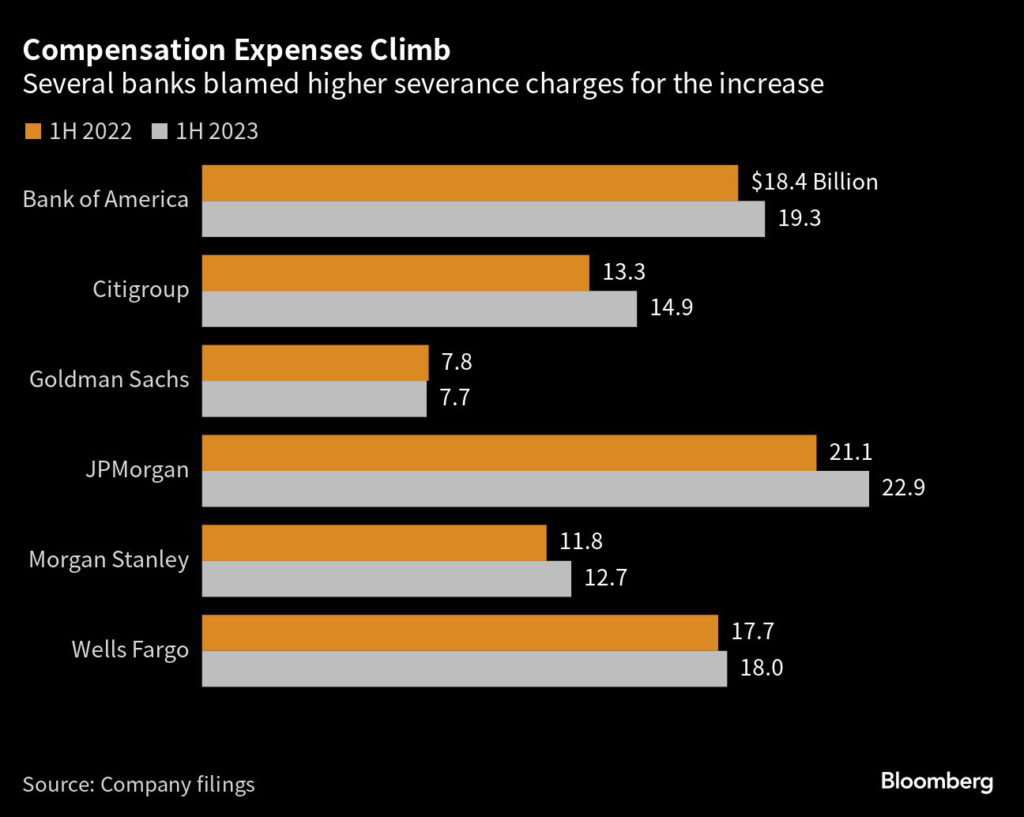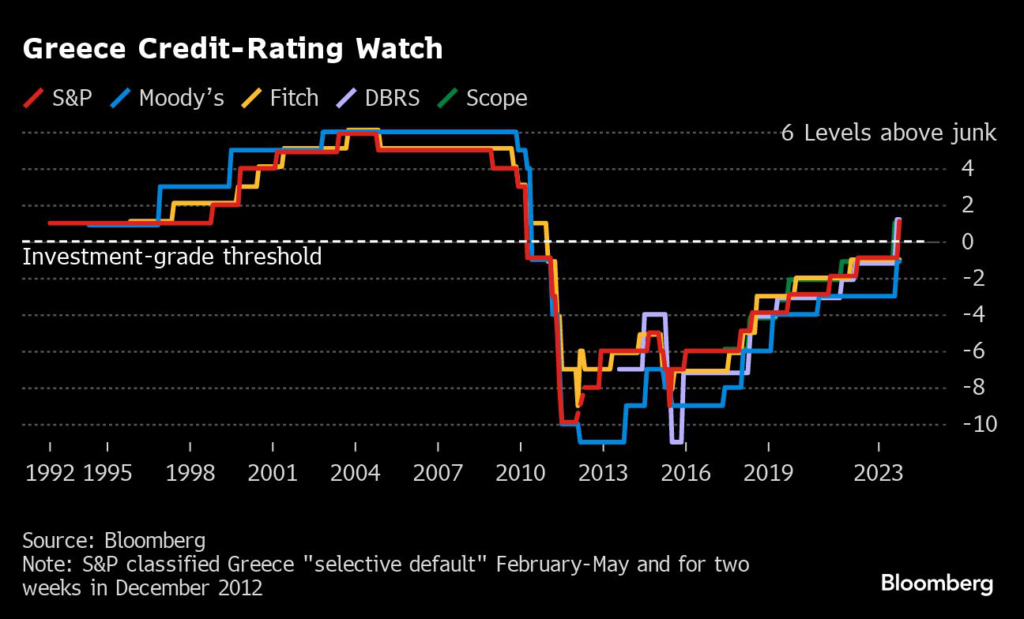Wall Street’s biggest banks whittled down their ranks by about 21,000 people in the first six months of the year as they rejiggered workforces amid a slump in dealmaking and capital markets activity.
(Bloomberg) — Wall Street’s biggest banks whittled down their ranks by about 21,000 people in the first six months of the year as they rejiggered workforces amid a slump in dealmaking and capital markets activity.
With the reductions in headcount, severance costs drove up expenses across the six largest US banks. Expenses tied to personnel and compensation jumped 6% to $95.5 billion.
“We were early in January in starting to work on the headcount sizing, we took a couple of actions so far this year and we feel good about where we are,” Goldman Sachs Group Inc. Chief Executive Officer David Solomon said on a conference call after reporting earnings. “We’ll watch the trajectory of revenues in the environment and as we go forward we’ll always make adjustments if something changes.”
Citigroup has set aside $450 million in severance costs so far this year after eliminating 5,000 roles while Morgan Stanley disclosed a $308 million hit from reducing jobs. Rival Bank of America Corp. took a different tack: The firm has seen headcount shrink by about 5,000 since January as the second-largest lender held off on replacing any staffers that left. Goldman Sachs, which has cut roughly 3,500 staffers so far this year, said those changes have helped the firm largely achieve its target of reducing payroll expenses by $600 million.
Banks that ramped up hiring in 2020 and 2021 amid a surge in M&A and initial public offerings are turning to headcount reductions as they grapple with falling revenue as dealmaking sputters. This quarter, executives were also dealing with a slowdown in trading from the meteoric levels during the pandemic.
Taken together, revenue from the Wall Street operations at five of the country’s largest banks slumped 8.9% to $67 billion in the first six months of the year.
That’s not all: the Federal Reserve’s aggressive push to raise interest rates over the last year has stunted lenders’ home lending operations, leading many banks to dismiss mortgage bankers. Plus, their years-long investments in technology have finally allowed some firms to move away from manual processes that have long dogged their efforts to improve efficiency.
Wells Fargo to Shrink Biggest US Mortgage Empire After Scandals
In recent days, executives said the efforts to reduce headcount were also exacerbated by the fact that fewer employees are leaving than they anticipated.
Wells Fargo & Co., for instance, blamed lower-than-expected attrition for its moves to cut staffers during the second quarter, which forced the firm to set aside more in severance costs. Firmwide headcount has declined by roughly 5,000 in the first six months of the year.
“We’ve been able to manage the headcount down,” Bank of America Chief Executive Officer Brian Moynihan told analysts on a conference call. “And frankly, that is in the face of a turnover rate year-over-year which has dropped in half.”
In some cases, bank executives acknowledged that the cuts were offset in the second quarter by the temporary addition of summer interns.
And there’s one notable exception to the culls: JPMorgan Chase & Co., which saw headcount in the second quarter swell above 300,000 for the first time ever. That even excluded roughly 5,000 staffers it’s adding from its rescue purchase of First Republic Bank.
At the end of last year, Morgan Stanley dismissed roughly 1,800 staffers. But Chief Executive Officer James Gorman said Tuesday that the decision at that time came with an additional warning for managers: if things don’t turn around by April, more cuts would likely be on the table.
The firm laid off another 3,500 people in the second quarter, booking its $308 million in severance costs. Still, Gorman said he doesn’t see a need for adding more employees even if the firm sees a turnaround in client activity.
“One of the beauties of this business is it’s very scale driven,” Gorman said in an interview with Bloomberg Television. “If you do a few more trades, you don’t need more people to do it for the same clients.”
More stories like this are available on bloomberg.com
©2023 Bloomberg L.P.










